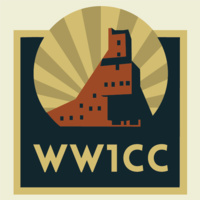 Two speakers are featured this weekend with the WWI symposium “Armistice and Aftermath.”
Two speakers are featured this weekend with the WWI symposium “Armistice and Aftermath.”
John Morrow, Jr. (University of Georgia) will present “African American Experience in WWI and Aftermath” from 7:30 to 8:30 p.m. Friday (Sept. 28)in the Rozsa Lobby. Lynn Dumenil (Occidental College) will present “Women and the Great War” from noon to 1 p.m. Saturday (Sept. 29) in the MUB Ballroom. Both talks are free and open to the public.
Morrow’s talk will address how African Americans understood and participated in the war effort on the home and fighting fronts and how white Americans responded to their efforts. He will explore how the war affected race relations and the conditions of African American life in the postwar United States.
Dumenil’s talk will focus on popular culture images of women in World War I, especially the attention given to how American women challenged gender conventions. She will explore claims that the war transformed traditional gender roles as well as the persistent power of expectations about women’s traditional roles.
Morrow Jr. and Dumenil will be on campus all day Friday (Sept. 28). If you are interested in meeting with either of them, email ww1cc@mtu.edu.
The visits have been supported by the Visiting Women and Minority Scholars program. The public lectures are part of “World War I in the Copper Country,” an extensive program of events and exhibits commemorating the WWI Armistice. Sponsors include Michigan Technological University Institutional Equity office, the Departments of Humanities, Social Sciences and Visual and Performing Arts, Finlandia University, the Carnegie Museum of the Keweenaw and the Michigan Humanities Council.